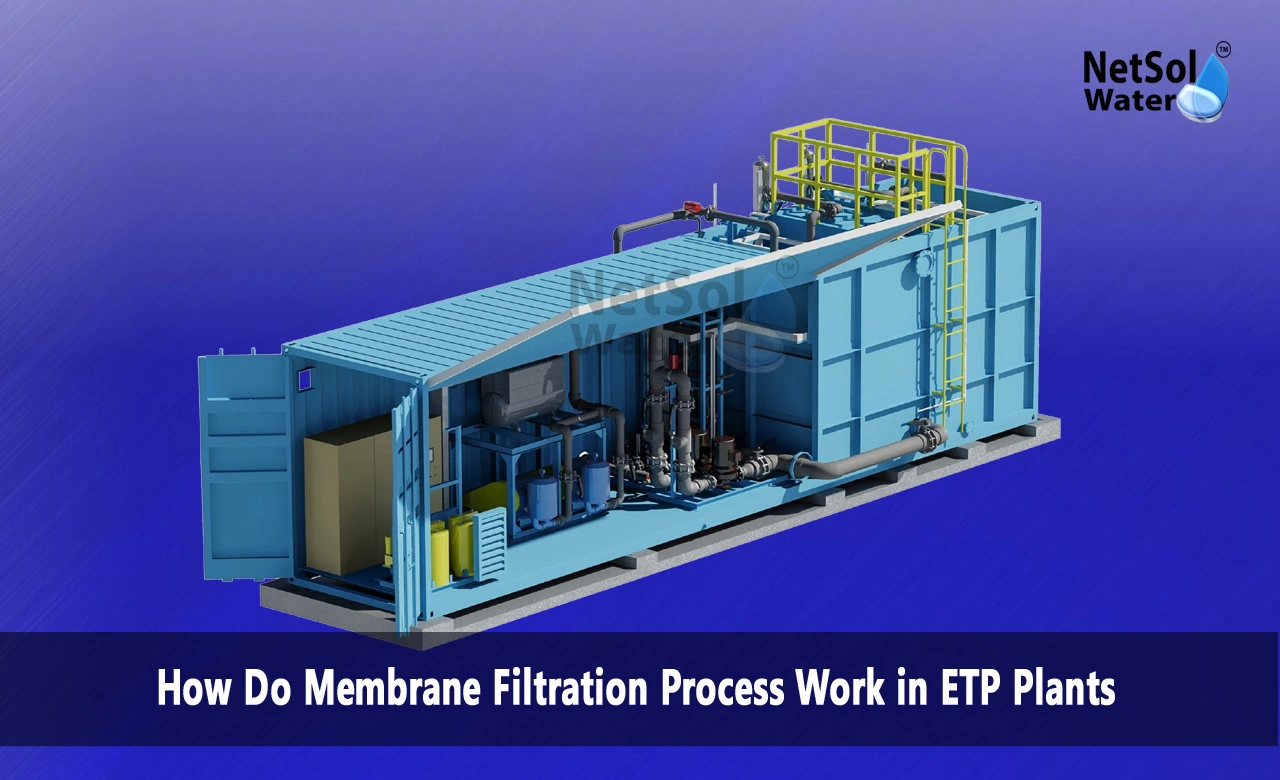How Do Membrane Filtration Process Work in ETP Plants?
Effluent treatment plants play a critical role in protecting our environment by removing harmful contaminants from wastewater before it is discharged into natural water bodies or reused for various purposes. While effective, traditional treatment methods often face challenges in meeting stringent discharge regulations and handling complex waste streams.Membrane filtration processes – a cutting-edge technology that offers a superior solution for effluent treatment. By combining advanced filtration techniques with biological treatment, these systems deliver exceptional effluent quality, compact footprints, and the potential for water reuse, making them an attractive choice for a wide range of applications.
Understanding Membrane Filtration Processes
Membrane filtration processes are based on the principle of selectively separating contaminants from water or effluent using semi-permeable membranes. These membranes act as physical barriers, allowing certain substances to pass through while retaining others, enabling precise and efficient separation of contaminants.
There are several types of membrane filtration processes commonly employed in effluent treatment plants, each with its unique characteristics and applications:
1. Microfiltration (MF)
· Microfiltration membranes have pore sizes ranging from 0.1 to 10 micrometers (μm).
· These membranes effectively remove suspended solids, bacteria, and some viruses from the effluent.
· Microfiltration is often used as a pretreatment step for further membrane processes or as a final polishing step.
2. Ultrafiltration (UF)
· Ultrafiltration membranes have smaller pore sizes, typically ranging from 0.01 to 0.1 μm.
· These membranes can remove not only suspended solids and bacteria but also many viruses and macromolecules.
· Ultrafiltration is commonly employed for advanced effluent treatment and water reuse applications.
3. Nanofiltration (NF)
· Nanofiltration membranes have pore sizes in the range of 0.001 to 0.01 μm.
· These membranes can effectively remove divalent ions, such as calcium and magnesium, as well as organic molecules with molecular weights greater than 200 Daltons.
· Nanofiltration is often used for softening and removal of specific contaminants, such as colour and organic matter.
4. Reverse Osmosis (RO)
· Reverse osmosis membranes are considered the tightest membranes, with pore sizes in the range of 0.0001 to 0.001 μm.
· These membranes can effectively remove most dissolved solids, including ions, molecules, and even some viruses.
· Reverse osmosis is widely used for desalination and the production of high-purity water.
The Membrane Filtration Process in Effluent Treatment Plants
In effluent treatment plants, membrane filtration processes are often integrated with biological treatment systems to achieve optimal effluent quality and meet stringent discharge standards. The typical process flow involves the following steps:
1. Preliminary Treatment
Effluent is subjected to preliminary treatment steps, such as screening and grit removal, to remove large solids and debris.
2. Primary Treatment
Primary treatment, such as sedimentation or flotation, is employed to remove settleable solids and floating materials.
3. Biological Treatment
The effluent then undergoes biological treatment, typically an activated sludge process or a membrane bioreactor (MBR) system, where microorganisms break down and remove organic matter and nutrients.
4. Membrane Filtration
- After biological treatment, the effluent is fed into the membrane filtration system, where it passes through the semi-permeable membranes.
- Depending on the desired effluent quality and treatment objectives, different membrane filtration processes (MF, UF, NF, or RO) may be employed.
- The membranes selectively retain contaminants, such as suspended solids, bacteria, viruses, dissolved solids, and organic molecules, while allowing the treated effluent to pass through.
5. Concentrate or Brine Management
The concentrated waste stream (concentrate or brine) containing the retained contaminants is collected and may undergo further treatment or disposal, depending on its composition and local regulations.
6. Disinfection and Polishing
The treated effluent may undergo final disinfection and polishing steps, such as chlorination or ultraviolet (UV) disinfection, to ensure compliance with discharge standards or reuse requirements.
Benefits of Membrane Filtration Processes in Effluent Treatment
1. Superior Effluent Quality
Membrane filtration processes offer exceptional effluent quality, often exceeding stringent discharge standards for various parameters, including suspended solids, bacteria, viruses, and dissolved solids.
2. Water Reuse Potential
The high-quality effluent produced by membrane filtration systems can be reused for various purposes, such as irrigation, industrial processes, or even potable water production after additional treatment, promoting water conservation and sustainability.
3. Compact Footprint
Membrane filtration systems have a significantly smaller footprint compared to conventional treatment methods, making them an attractive option for facilities with limited space or in densely populated areas.
4. Process Flexibility
Membrane filtration systems can be designed and operated to accommodate fluctuations in influent flow rates and contaminant loadings, making them well-suited for various industrial and municipal applications.
5. Environmental Benefits
By enabling water reuse and minimizing the discharge of contaminants into natural water bodies, membrane filtration processes contribute to environmental sustainability and the protection of aquatic ecosystems.
Conclusion
From municipal wastewater treatment to industrial effluent management, the versatility of membrane filtration processes has made them a valuable tool across a wide range of settings. While challenges such as membrane fouling, energy consumption, and concentrate management must be addressed, the benefits of these processes often outweigh the considerations, especially when coupled with proper system design, operation, and maintenance practices.As we continue to prioritise environmental sustainability and water resource management, the adoption of membrane filtration processes in effluent treatment plants will undoubtedly play a pivotal role in protecting our water bodies, promoting water reuse, and paving the way for a more sustainable future.
To explore customised commercial RO plants, Industrial RO plants, ETP or STP solutions for your needs in your areas and nearby regions, contact Netsol Water at:
Phone: +91-965-060-8473, Email: enquiry@netsolwater.com



